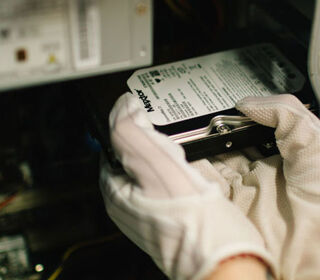
Opinion

Following the tragic case of Sarah Everard, our Digital Forensics Lecturer, Richard Hale shares his analysis of the digital opportunities and highlights the importance of forensics investigators.
The tragic case of Sarah Everard and the subsequent investigation highlighted how important digital forensics is in policing in 2021. As I watched the case unfold, my digital forensics investigator side started to plan out what digital evidential opportunities would be available and how they would assist the case.
Typically when investigating a person’s disappearance, police will look to recreate their movements up to the point they went missing. They may then go on to monitor withdrawals from ATMs, transactions from credit/debit cards and mobile phone activity.
Thanks to the presence of CCTV (both commercial and private), this task has been made somewhat better. However the volume of CCTV data, particularly in a capital city, requires a lengthy review of recovered footage, in this case, thousands of hours’ worth. The review process will also be impacted due to certain factors such as the quality of the footage, whether it was filmed in colour or black and white, the lighting of the person and so on. Thankfully, Sarah was wearing distinctive clothing on the day of her disappearance, so officers would have been able to identify her in colour footage much more easily.
Officers also had a rough timeline to work to as Sarah had left a friend’s house around 21:00 to head for her home, and she also made a 14 minute phone call to her boyfriend at around 21:13. These two events would have allowed cell site analysts to establish which cell towers her phone would have been connected to and give an approximate location of her phone in the South Circular area around 21:30. The same technique was able to link Couzen’s mobile phone to the area.
Officers would then have been able to establish key locations as she travelled and be able to start the process of collecting CCTV footage. The types of footage officers were able to collect came from traditional sources such as supermarkets, and importantly CCTV footage from private sources such as CCTV cameras on houses and doorbell cameras helped to add to the timeline of events around Sarah’s disappearance.

One of the most likely key pieces of evidence was the dashcam footage showing Wayne Couzen's standing at the side of the road speaking with Sarah Everard. This piece of footage has featured by many news articles relating to the story, despite the footage not showing their faces clearly. What the footage did show was the vehicle registration of the white Vauxhall parked at the side of the road with its hazard lights flashing. From this, officers were able to locate the registered keeper of the vehicle, and importantly who rented it.
Officers then had the task of piecing together the movements of their suspect Wayne Couzens.
Couzens visited a service station in the early hours of the following morning, followed by visits to return the hire car, a petrol station and the location of where Sarah’s body was eventually found.
Together with the CCTV footage, officers would have been able to obtain credit/debit card transactions, establish exactly what was bought by Couzens and use ANPR (Automatic Number Plate Recognition) to further understand the timeline of his movements as he travelled between various locations.
Thankfully the hard work of the investigation team culminated in the arrest and charge of Couzens.





